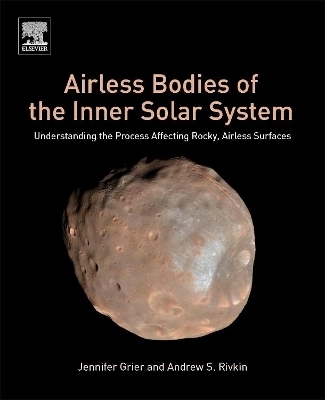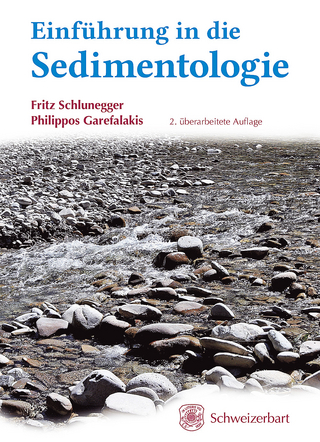
Airless Bodies of the Inner Solar System
Elsevier Science Publishing Co Inc (Verlag)
978-0-12-809279-8 (ISBN)
Together these authors represent the unique combination of skills and experience required to produce an excellent book on the subject of the surfaces of airless, rocky bodies in the solar system, which will be useful both for graduate students and for working scientists.
Dr. Grier is a Senior Scientist and Education Specialist who works remotely from her base in Columbia, MD. Her research interests and areas of expertise include: analysis of multispectral images of terrestrial planets and asteroids, thermal impact crater formation and morphology, and chronologies of impact events and solid surfaces through examination of remote sensing and isotopic age data. Some of her specific research has: determined the relative ages of rayed impact craters on the Moon through optical maturity of crater ejecta, dated fluvial channels on Mars with impact crater statistics, found the ages of thermal impact events on asteroids by examination of meteorites, and estimated the time of formation of the Gardnos impact structure on Earth.In addition to research, Dr. Grier has broad interests in science education and public outreach. These interests include: scientist engagement in E/PO, the development of critical thinking skills, and imparting an understanding of our context within the Solar System and larger universe. Some of her specific education work has included: working with school systems to develop science curricula, partnering with science museums to vet exhibit content, offering professional development workshops to teachers and Girl Scout leaders, and teaching classes at the university level.When not engaged in research or education projects, Dr. Grier: writes and reads science fiction stories and poetry, blogs at “Fictional Planet (onewritersmind.blogspot.com), makes and sells beaded gemstone jewelry, goes wine tasting, plays video games, and thinks about getting a cat. At the Johns Hopkins University Applied Physics Laboratory, Andy Rivkin's research centers around near-infrared spectroscopy and spectrophotometry of asteroids, remotely dowsing the main belt. Much of his recent work can be found at the SMASS homepage, and a general webpage for the group he was in at MIT can be found here. He is also the Treasurer of the Division for Planetary Sciences of the American Astronomical Society.In his copious spare time, he listens to and plays music, and has a blog with informal recordings and a site for downloading fuller recordings as well as other, more random things. Why We Are “The Team - Grier is both a scientist and educator with more than twenty years of experience in distilling scientific ideas for consumption by a range of audiences. Grier’s scientific expertise includes understanding the evolution of impact crater ejecta on a variety of surfaces. Rivkin is an asteroid expert with twenty-five years of experience investigating asteroid surface compositions. Grier and Rivkin have worked successfully before on several projects including producing the textbook “Inner Planets for Greenwood Press. Together we represent the unique combination of skill and experience to produce an excellent book on the subject of the surfaces of airless, rocky bodies in the solar system, which will be useful both for graduate students and for working scientists.
1. Introduction2. Common Characteristics of Airless Bodies3. Rethinking the Moon, Mercury, and Asteroids (including Mars Moons, Phobos and Deimos)4. Data and Techniques5. Comparing Sample and Remote Sensing Data – Understanding Surface Composition6. What is Space Weathering?7. Impact Events Micro and Macro - The Creation of Regolith and Soils8. The Nature and Movement of Dust9. Unusual Issues10. Future Exploration11. Conclusion
| Erscheinungsdatum | 26.10.2018 |
|---|---|
| Sprache | englisch |
| Maße | 191 x 235 mm |
| Gewicht | 590 g |
| Themenwelt | Naturwissenschaften ► Geowissenschaften ► Geologie |
| Naturwissenschaften ► Geowissenschaften ► Geophysik | |
| ISBN-10 | 0-12-809279-3 / 0128092793 |
| ISBN-13 | 978-0-12-809279-8 / 9780128092798 |
| Zustand | Neuware |
| Haben Sie eine Frage zum Produkt? |
aus dem Bereich


